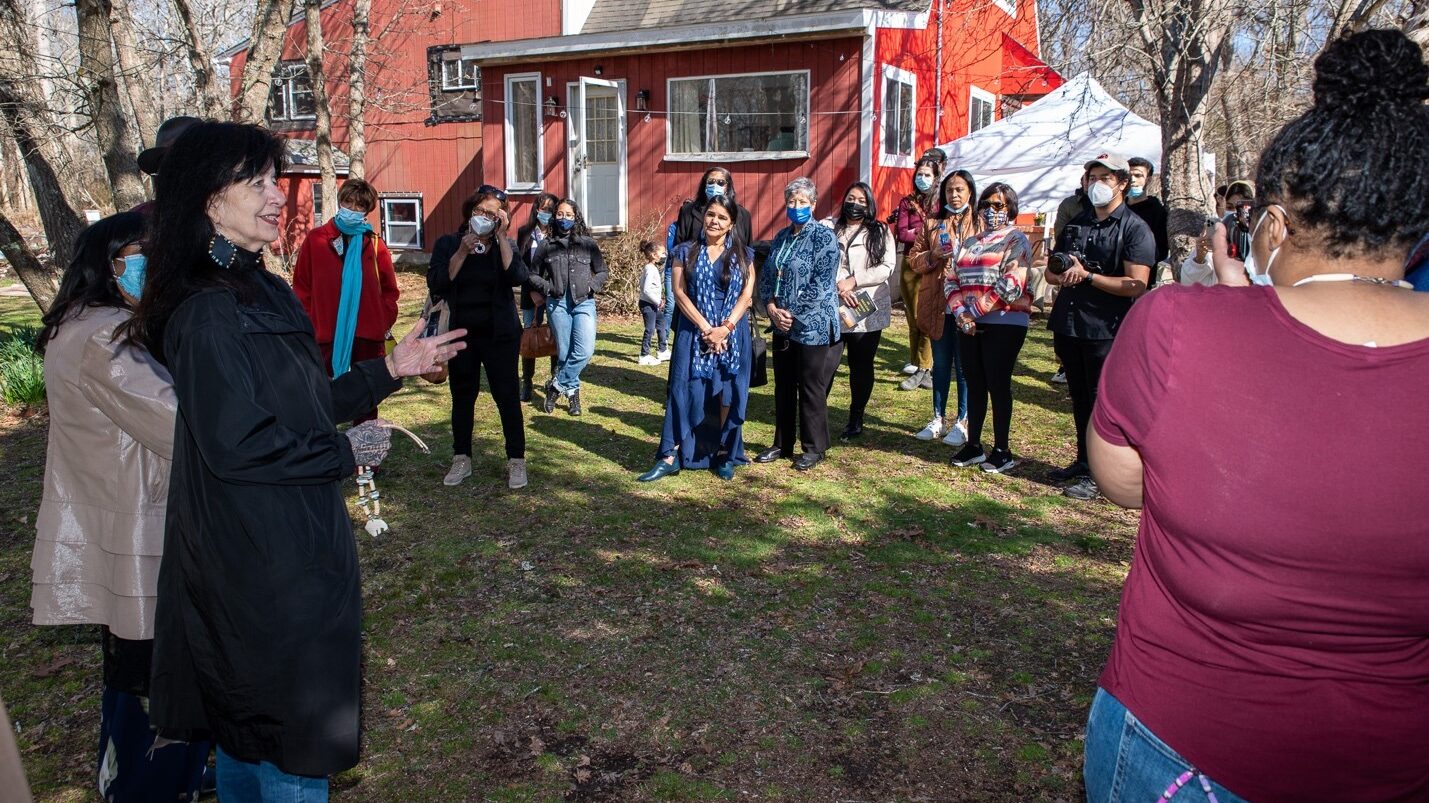Long Island is best known for the mansions of the rich and famous that come to Southampton’s beaches every summer. However, on Long Island there are many socially and economically marginalized communities whose efforts sustain the economy and lifestyle that the rich and famous get to enjoy. This disparity has made Long Island one of the most segregated places in the United States.
Teatro Experimental Yerbabruja is located in the heart of Long Island in Bayshore, New York. Its mission is to serve as a catalyst for social change on the island through its diverse programs aimed at healing the community through the arts. Having grown directly out of the community it serves, Teatro Experimental Yerbabruja has always been committed to advancing cultural understanding by using art to promote constructive social change. The theater’s work with the NEA Big Read was a great opportunity to see this mission in action.
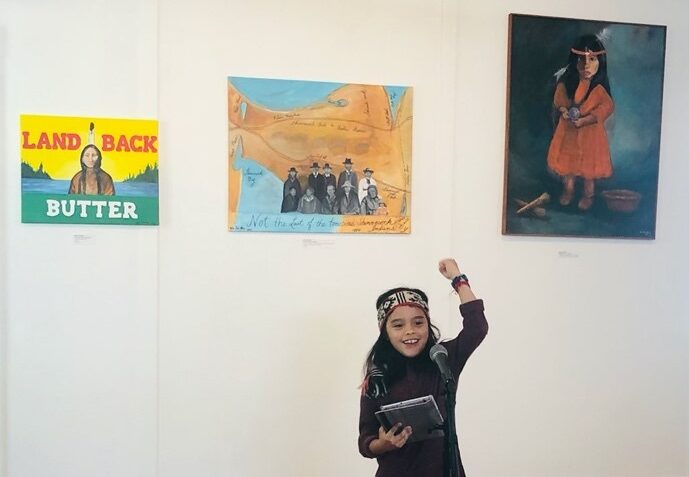
Conversations Between Indigenous Communities
Each year, more than 75 organizations from across the United States receive National Endowment for the Arts Big Read grants to put on community-wide reading programs that centers on sharing the power and joy of great books like An American Sunrise. This collection of poems revisits the homeland from which poet Joy Harjo’s ancestors were forcibly uprooted in 1830 as part of the Indian Removal Act.
Teatro Yerbabruja’s executive director, Margarita Espada, chose Harjo’s An American Sunrise because it offered the opportunity to open the conversation about the history of the BIPOC (Black/Indigenous/People of Color) communities on Long Island. The NEA Big Read program served as a safe space to acknowledge the intersections between the Indigenous people from the Shinnecock and Montaukett Nations native to Long Island, and the Indigenous Latino immigrant community.
“Joy Harjo’s work is based on social justice from her own community, and she’s opened the space for the communities that are outsiders from the main cultures. That’s exactly what we do. As Latinos/Latinas we have Indigenous identities, and no one is talking about it,” said Espada who is of Boricua (Puerto Rican) origin. “I wanted to bring the conversation through her book about Latin American Indigenous history, and also to honor Indigenous communities here on Long Island.”
Lead project partners on NEA Big Read Long Island included the Shinnecock and Montaukett Nations, the Suffolk County Library System, Bay Shore Union Free School District’s High School’s Ethnic Pen Conference and Stony Brook University. The project encompassed 56 events including 31 book discussions and 29 partner organizations, including Sound of Justice, Latina Moms, Suffolk County Community College, Suffolk County Office of Cultural Affairs, Head Start, La Fiesta Radio, Northwell Hospital and the Custer Institute & Observatory. Activities involved readings from Harjo’s An American Sunrise and her children’s book The Goodluck Cat, as well as music performances, open mics, movie presentations, dance events, creative writing workshops, art exhibits, and stargazing.
Among the most significant moments of the NEA Big Read Long Island was the first day of the program in celebration of Indigenous People’s Day. Around 300 participants flocked to Teatro Yerbabruja’s art gallery and performance space for a poetry reading, live music performances, a live DJ, an art exhibition, and a book discussion. This event marked a historic moment—the first meeting of participating Latino immigrant artists of Taíno, Mayan, Aztec, Inca and other South and Central American Indigenous descent and members of the Indigenous communities of Long Island.
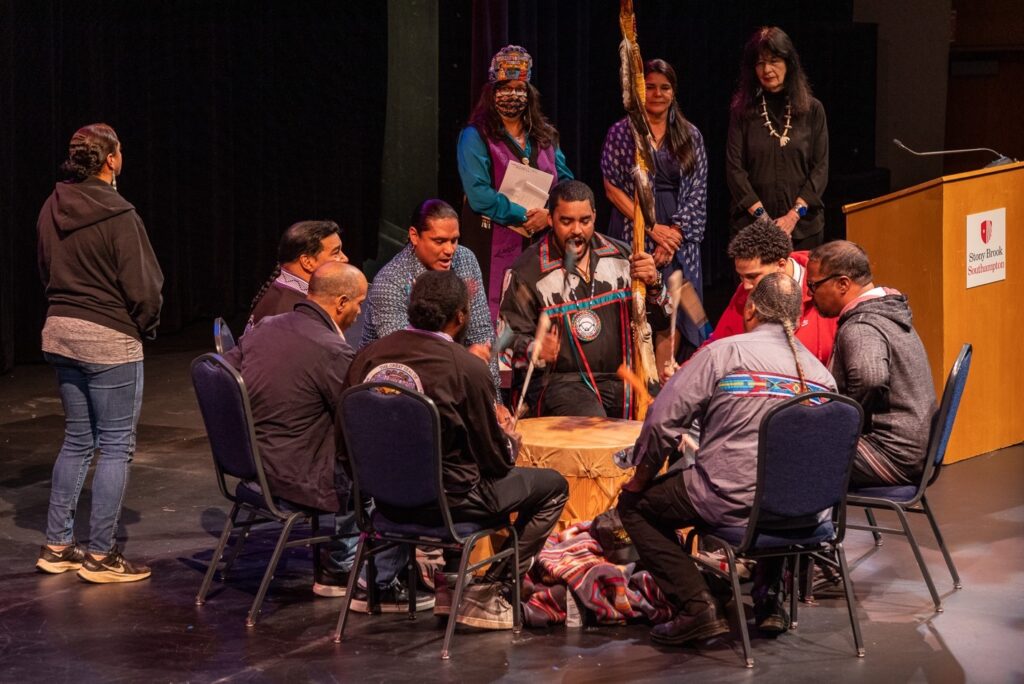
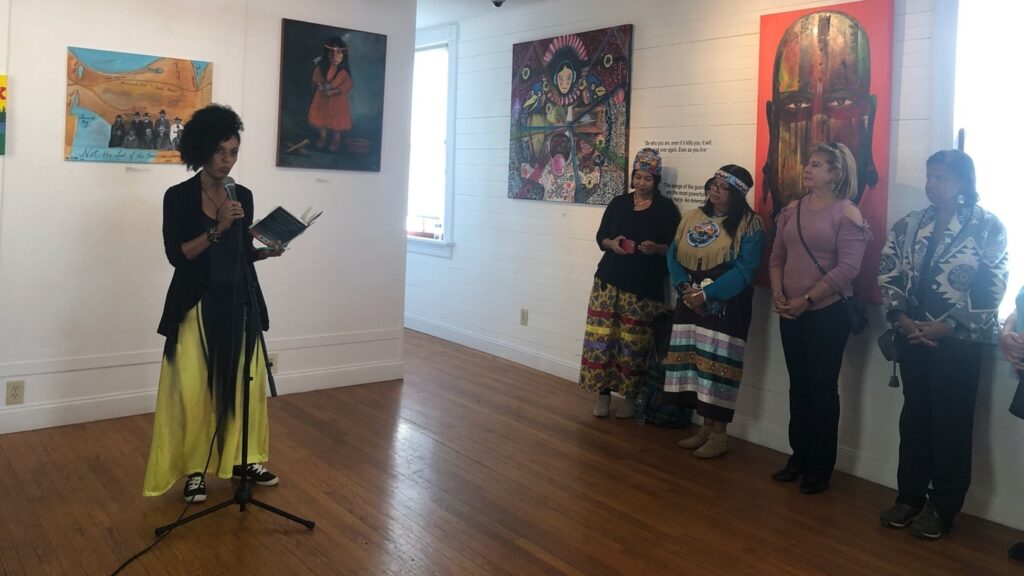
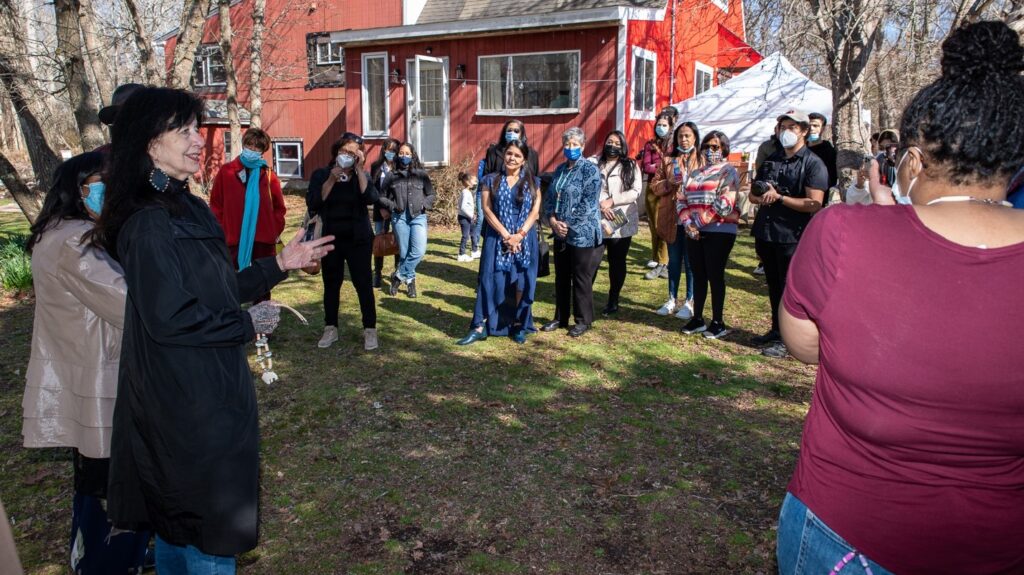
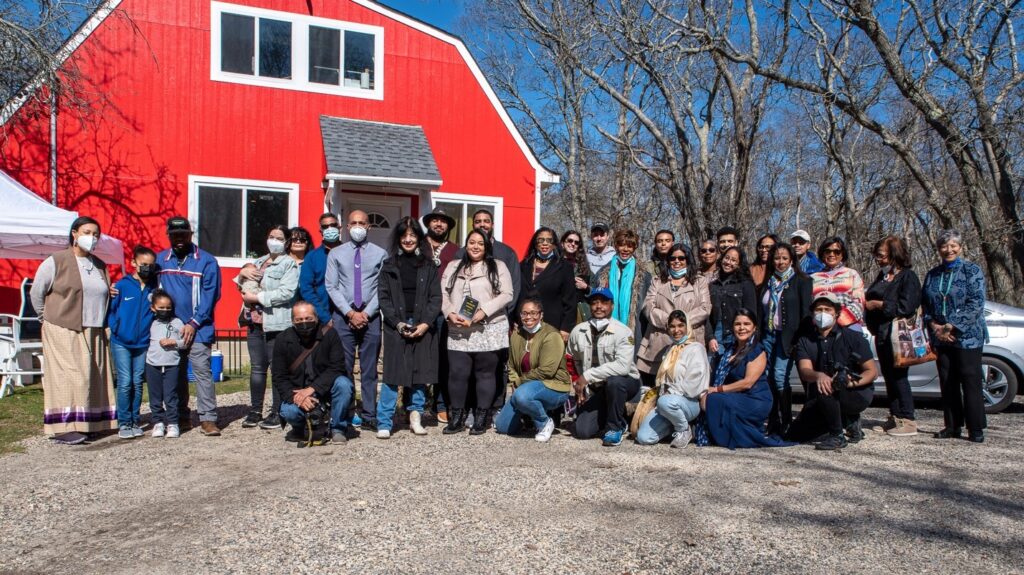
A Visit from the U.S. Poet Laureate
Joy Harjo is the first Native American to hold the post of United States Poet Laureate. She made one of her final appearances in that role as part of the NEA Big Read Long Island. She started her visit with a reading with the young poets at the Bay Shore Union Free School District’s High School Ethnic Pen Conference. She then visited the Shinnecock Nation’s Reservation, where she took part in an intimate community space filled with personal stories, art, music and food.
Harjo’s visit culminated with her presentation at Stony Brook University. She was greeted on stage by Shinnecock singers and drummers, and Denise Silva-Dennis, an artist and member of the Shinnecock Nation. Silva-Dennis opened the event by reading a land acknowledgment, reminding those in attendance that the college campus was, and remains, part of the Shinnecock Territory, even though her ancestors had been forced off that land in 1859. “The land acknowledgment was not intended to remind tribe members that it was their land, but to remind our nonnative neighbors that this is our land,” said Silva-Dennis. “This remains our land regardless of who might be playing golf, who might be building mansions or hospitals—all of which desecrate burials in our unceded and sacred Shinnecock space.”
Harjo began her reading with the poem For Calling the Spirit Back from Wandering the Earth in its Human Feet. “This is a poem I wrote because sometimes we get lost on the way and we lose parts of ourselves,” she said. “It’s also a prayer for communities and people to do well in finding their way in these very challenging times we are all in together.” Harjo also spoke about the land saying that every human being is charged with being a keeper of this Earth. “Because, essentially, we are the Earth.”
The Land to Which We Belong
The final events of NEA Big Read Long Island included the presentation of the documentary Conscience Point. The 2019 documentary film presents us with the struggle of Becky, an activist and a member of the Shinnecock Nation. Her story brings to light the suffering of her community in the face of losing land at the hands of wealthy investors and the Southampton Town government. For Becky and her family, love for the land is sacred, which is why she has dedicated her life to preserving it in a holistic and sustainable way for her community. This documentary created additional awareness of the oppression and historical generational traumas experienced by the Shinnecock Nation.
The NEA Big Read Long Island program concluded with an exhibit featuring Native American archaeoastronomy and a concert under the stars at the Custer Observatory. In this outdoor program Peruvian Indigenous artist, Sicanni Purizaca, performed Andean traditional flute music that highlights the culture of the Indigenous people of the Americas, which originated in the Andes Mountains of Peru.
Listening to readings of excerpts from the chosen poetry collection An American Sunrise by members of Teatro Yerbabruja and learning about the importance that astronomy has in Indigenous cultures, created a mystical space of connection and understanding with the earth and the stars, and marked the closure of the project which brought the whole experience full circle. As reflected in the words of Silva-Dennis, “Deeds, titles, boundary lines, treaties, edicts come and go, but you know what? The Indigenous people and the land to which we belong remain forever and ever and ever.”
The National Endowment for the Arts Big Read is a national program administered by Arts Midwest that helps communities realize the benefits of reading together. Each year, grants are given to about 75 community reading programs around the country to create events and opportunities for their community to read and discuss one book together. Since 2006, more than 1,600 NEA Big Read programs have taken place in every U.S. state.
